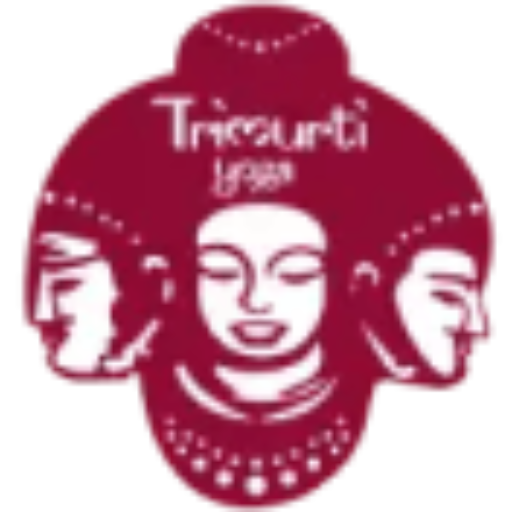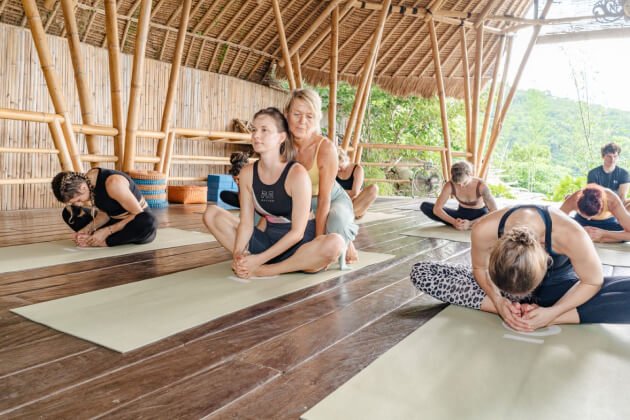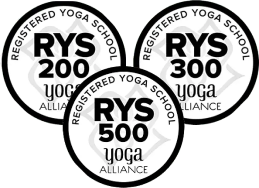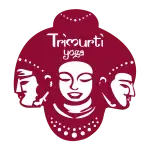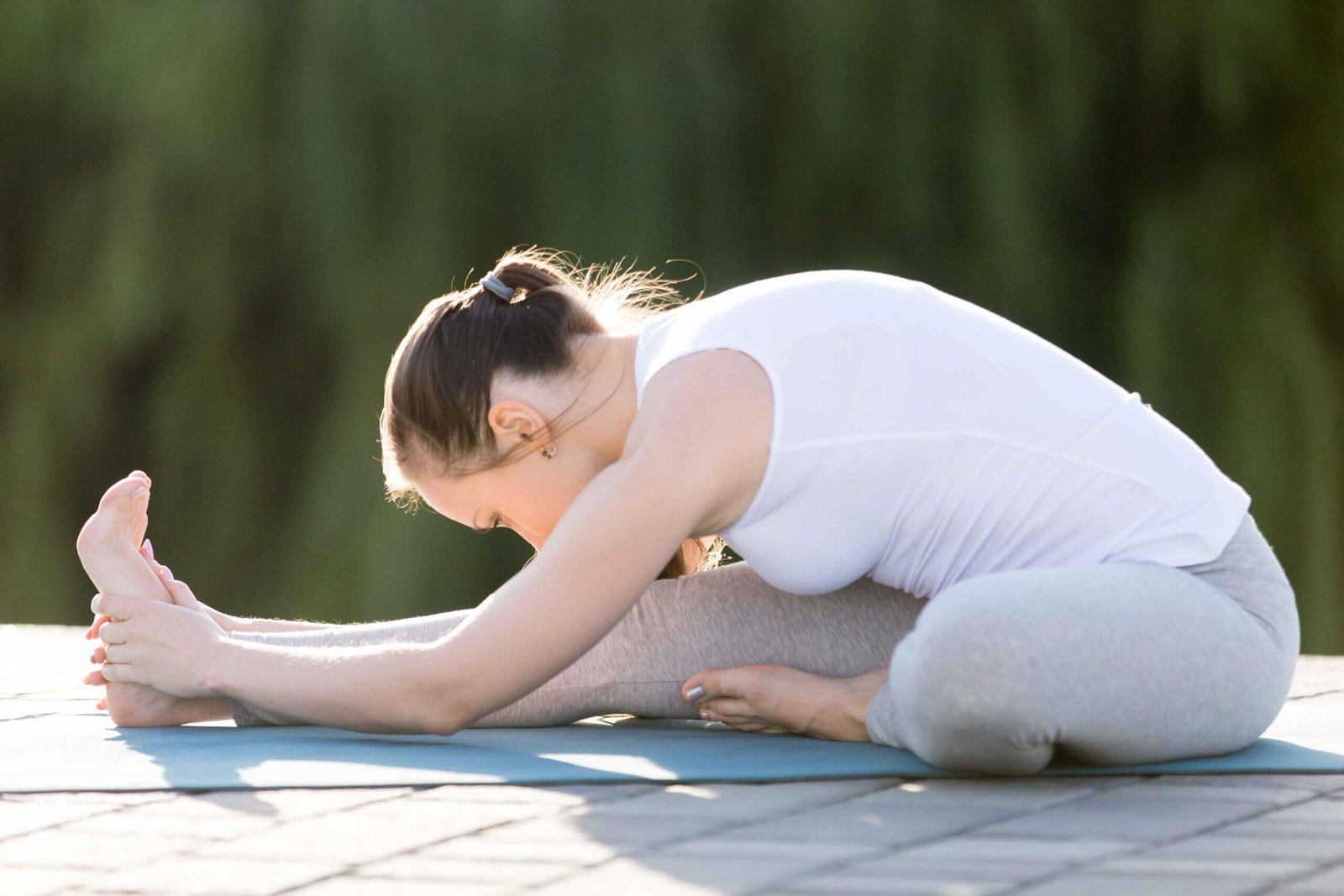
Yin yoga is a type of yoga that involves holding certain passive positions (known as yin poses) for an extended period, often 3 to 10 minutes. Although Paul Grilley developed this kind of yoga in the 1980s, the process of actually holding each pose for an extended amount of time had its roots in the classical Hatha Yoga first practiced by monks.
In this article, we are going to discuss Yin Yoga and its benefits.
What is Yin Yoga?
It’s a quiet, passive form of yoga where one holds these positions, also called asanas in Sanskrit, for extended periods while improving inner awareness. This means focusing on your breath, thoughts, and physical sensations.
The most important distinction of Yin Yoga is the passive or yin nature of the postures, allowing for the relaxation of the muscles and targeting the deeper tissues of the body. One slowly sinks into the pose, often helped by props such as cushions. While the postures have some resemblance to Classical Hatha Yoga asanas, they have been modified to easily be distinguishable.
Benefits of Yin Yoga
Yin yoga, like other types of yoga, has multiple benefits including:
- Improve one’s flexibility altogether.
- Improved blood flow.
- Improvement in the range of motion for joints and ligaments.
- Make you aware of your breath.
- Balance of your emotional well-being.
- Lower stress, sorrow, anxiety, and sleeplessness.
Yin Yoga Poses
Balasana
- Start on your hands and knees.
- Put your big toes together and your knees out to the sides.
- Lower your hips towards your feet and stretch your body across the floor.
- Extend your arms in front.
- Breathe deeply, sinking deeper into the posture with each exhalation.
- Hold this position for up to 5 minutes.
Matsyasana
- Sit with your legs straight in front of you.
- Beginning at the base of your spine, set up an inclined support with cushions and blocks.
- Slowly fall back on the support.
- Allow your head to lean back or use props to keep your neck in an upright position.
- Continue in this position for up to 5 minutes.
Viparita Karani
- Sit on the right side, against a wall.
- Lift your legs up against the wall and lie on your back.
- Place your hips next to or against the wall.
- Put your arms above or beside your body, or rest your hands on your chest, tummy, or thighs.
- Hold this position for up to 15 minutes.
Supta Padangusthasana
- Lay on your back with both of your legs extended.
- Bend your left leg and bring your knee against your chest.
- Pull your toes towards your shin while pressing out with the heel of your right foot.
- Put the strap around the ball of the foot on the left and grip both ends.
- Extend your left leg straight up, keeping the sole of your foot facing upwards.
- Maintain a small bend in your knee.
- Hold this position for up to 3 minutes.
- Continue on the opposing side.
Supta Matsyendrasana
- Lie on your back, legs bent, and legs resting on the floor at your hips.
- Extend your arms straight out to the sides, palms down.
- Exhale and lower your knees to the left side.
- Turn your neck to face any direction.
- Hold this position for up to three minutes.
- Continue on the other side.
Is Yin Yoga for Beginners?
No wonder yin yoga has recently proved to be a great and very useful practice among beginners and more advanced yogis. It is a universal kind of workout that suits all people, regardless of their age or ability.
Be cautious not to hurt yourself, though. Take at least a few instructed classes from a trusted teacher before experimenting with new yin yoga poses on your own.
Related Blog:- Yin Yoga and meditation
What’s the Difference Between Yin Yoga and Other Styles of Yoga?
There are many different types of yoga. Some are more active (yang), while others are passive (yin). Yang involves your body’s muscle tissues, but yin involves deeper connective tissues such as tendons, fascia, and ligaments.
What mostly distinguishes 100 hour yin yoga from the rest of the yogic practices is the amount of time it requires to maintain each asana or position. Practices that tend to be more dynamic, like Vinyasa Flow Yoga, involve holding a position for 5 to 10 breaths and dynamic movements in and out of different asanas.
In yin yoga, you hold each posture for three to ten minutes, during which time you give your body’s deeper, less flexible tissues the chance to stretch. Yin yoga is more likely to increase a person’s general flexibility and range of motion rather than types of yoga that strengthen the muscles.
Yin Practice is mindful breathing and is practiced with control. After yin breathing might come the relaxed belly breathing. This intimate practice helps yogis to connect with their bodies, emotions, and feelings.
Who Should Avoid Practicing Yin Yoga?
Even though yin-yoga is known to be excellent as exercise, it can be a form of exercise that some people with osteoporosis need to avoid the practice of certain postures, especially the ones involving extreme flexing or extending of the spine in yin yoga.
This also includes women who are in their last trimester of pregnancy or those who are just recovering from birth. The hormone relaxin, secreted during pregnancy, enhances flexibility in the joints, which makes a female more prone to injury or overstretching from yin yoga.
Conclusion
Yin Yoga suits most people of ordinary fitness levels who want to create a calm, meditative practice or start some more energetic exercises. Yin yoga allows you to slow down and recharge from within by working out the stressors. The practice also brings flexibility to the body, improves blood flow, and relieves tension. Start practicing Yin Yoga daily to get the most benefits.
We Also Provide These Courses:

